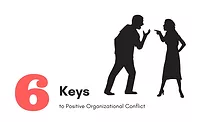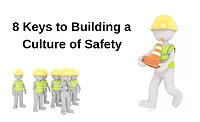3 Keys to Successfully Approaching New Clients Through Email

All businesses need new clients, restoration most certainly included. Even the most basic research allows you to identify potentially valuable future customers, and draft a list of prospects. If the prospects are of as much value as anticipated, then the team must understand, appreciate and honor the etiquette of good business approaches and the gatekeeper to those clients. Paul Buccheit, the creator and lead developer of Gmail, expresses the sanctity of email, “Only my phone number and email are private because I don't want random people calling me. But I like the ability to share everything.”
Who is the gatekeeper? In the modern economy the gatekeeper, or first line of defense, for clients of value is their email. Approaching a potential client through email can either be perceived as an invasion of privacy or a respectful approach that honors business boundaries, depending on how the content is composed. The drafting of an email will either allow admittance into the outer courtyard or expel you into the moat of oblivion. Thankfully, the keys to honoring the modern gatekeeper when approaching new clients are rather simple.
1) Subject Line
"People often decide whether to open an email based on the subject line," business coach Barbara Pachter says. "Choose one that lets readers know you are addressing their concerns or business issues." (Smith, 2016)
The subject line should be concise and answer the question whether there is value for the targeted client to open this email or pass this failed attempt at communication through to junk mail (the moat). Junk mail is the default setting for most email from unknown sources, as well as emails that are clearly a solicitation. So, if you are approaching people through email, you must recognize that email is the invitation, not the drawn-out conversation. Your subject line is the extending of your hand and your body language transmitted through however many characters you utilize in this important electronic transmission. An effective posture when composing a subject line will be respectful of time by providing a brief value proposition without being kitschy. The goal of the subject line introduction is to get the email opened.
2) First Paragraph
“It’s better to say nothing than spend 1000 words or an hour speech saying nothing. Get to the point – fast.” Richard Branson
If the email is opened, congratulations, the careful efforts have made it through the first line of defense and the relationship is past the initial cyber handshake in approaching a potential client. Any day that emails are not added to the hundreds of efforts banished to junk/block is a good day. If emails to prospects are introductions and the introduction is received, it is appropriate to follow up. Don’t ruin the good favor that the well thought subject line has created by now backing a dump truck of information upon the prospect. Remember the current advancement is only into the outer courtyard, not yet within the castle walls.
Continue with the theme of the subject line and maintain respect for time, be brief and expound on the value proposition to the client, then ask for the opportunity to discuss further. This is the elevator pitch as the client has opened the outer gate but will discontinue the interaction just as quickly if there is an inability to connect.
3) Follow Up
Director of Marketing for The Muse, Elliot Bell encourages, “Remember: If someone does ask you to stop following up, stop following up. But until you hear that, it’s your responsibility to keep trying.”
Research, care and respect have advanced the efforts to this point and now it’s time for appropriate follow up with respect to the correct etiquette. This email is meant to ensure the client received the original email and determine whether they would like to discuss the content further. A follow up call or email should be brief and respectful, with a personalized addendum to the value proposition from prior email.
When a call is made, there is an inherent request to venture further into personal space as well as asking for additional time, so the same principles applied in previous stages are as essential. The purpose of follow up is to answer for both parties whether there is value in moving forward with this potential business interaction.
All clients have value and in the modern economy email serves as a gatekeeper when approaching prospects. Being brief, concise and respectful when composing a value proposition will enable greater success in introducing oneself through email. As noted in a previous article entitled Marketing Step One, good business practitioners are always looking to create opportunities to show potential clients how their organization can serve specific needs. Each step in the process of meeting new clients is about breaking down barriers rather than storming the gates in one fell swoop. All individuals are unique so it is important to listen through the process and learn from successful as well as unsuccessful approaches to new clients.
For a personal example of how the author was able to initiate and build a networking resource for local clients in an underserved market, read How To Network With Local Facility Management Peers posted on FacilityExecutive.com. Many of the invitations that lead to ongoing business relationships that built Local Facilities Manager’s Connection (LFMC) were initiated through emails using the principles outlined in the source article above.
References
Smith, Jacquelyn (2016, February 1) 15 email-etiquette rules every professional should know. Business Insider. Retrieved from http://www.businessinsider.com/email-etiquette-rules-every-professional-needs-to-know-2016-1/#1-include-a-clear-direct-subject-line-1
Bell, Elliot. Pleasantly persistent: 5 rules for effectively following up. The Muse. Retrieved from https://www.themuse.com/advice/pleasantly-persistent-5-rules-for-effectively-following-up
Looking for a reprint of this article?
From high-res PDFs to custom plaques, order your copy today!







